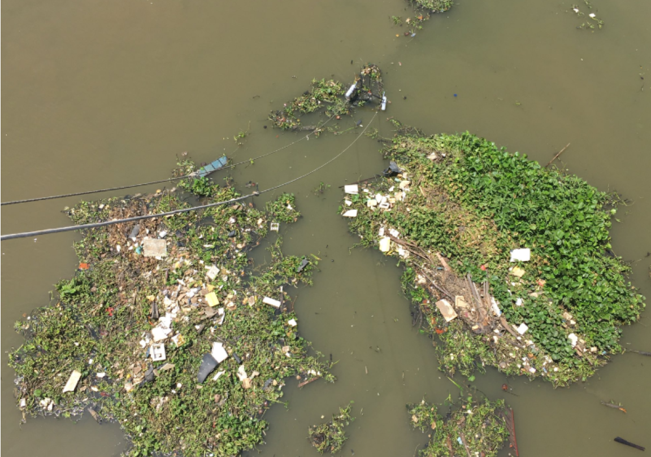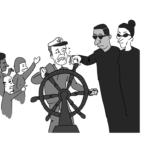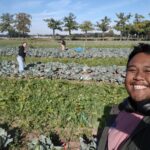Water hyacinths grow abundantly in the Saigon river in Vietnam. They also carry plastic debris floating in the river. We can catch two birds with one stone by removing the invasive plants and the plastic waste, says Louise Schreyers, who is doing her PhD research at the Hydrology and Quantitative Water Management Group.
Schreyers analysed field data and drone images collected in the Saigon river during a six-week monitoring campaign. The river flows through Ho Chi Minh City, Vietnam’s largest city. The hyacinths can form large patches of several meters long and wide, which disrupt river navigation and block the city’s canals. Schreyers found that this plant catches 78 percent of the floating plastic debris in the river. She recently published the results in Frontiers in Environmental Science.
Schreyers is currently conducting a one-year monitoring campaign, during which she will also use drone and satellite images to discover where the hyacinths most frequently accumulate in the Saigon river. It is yet uncertain where the plastic enters the river and how it becomes entrapped in the water hyacinth patches in the first place. Moreover, the size of the floating hyacinth patches can differ a lot, sometimes covering as much as 30% of the Saigon river, sometimes not even 1%.
Clean-up
Apart from her research, she collaborates with a German start-up and Vietnamese officials to develop clean-up operations. The spatial analysis she is conducting on accumulation zones of floating water hyacinths, allows her to advise on suitable locations to install floating constructions that collect both the water hyacinths and plastic debris.
Schreyers thinks her findings are also relevant for other tropical rivers, for instance, the nearby Mekong. Satellite images suggest that water hyacinths might also play an important role there in accumulating and transporting plastic waste. ‘A lot of plastic waste in rivers never makes it to the sea because it gets trapped in plants or sediments. My co-promotor Tim van Emmerik wants to understand the transport and accumulation of plastic waste in rivers. I focus on the role of vegetation.’

 Photo Tim van Emmerik
Photo Tim van Emmerik 

